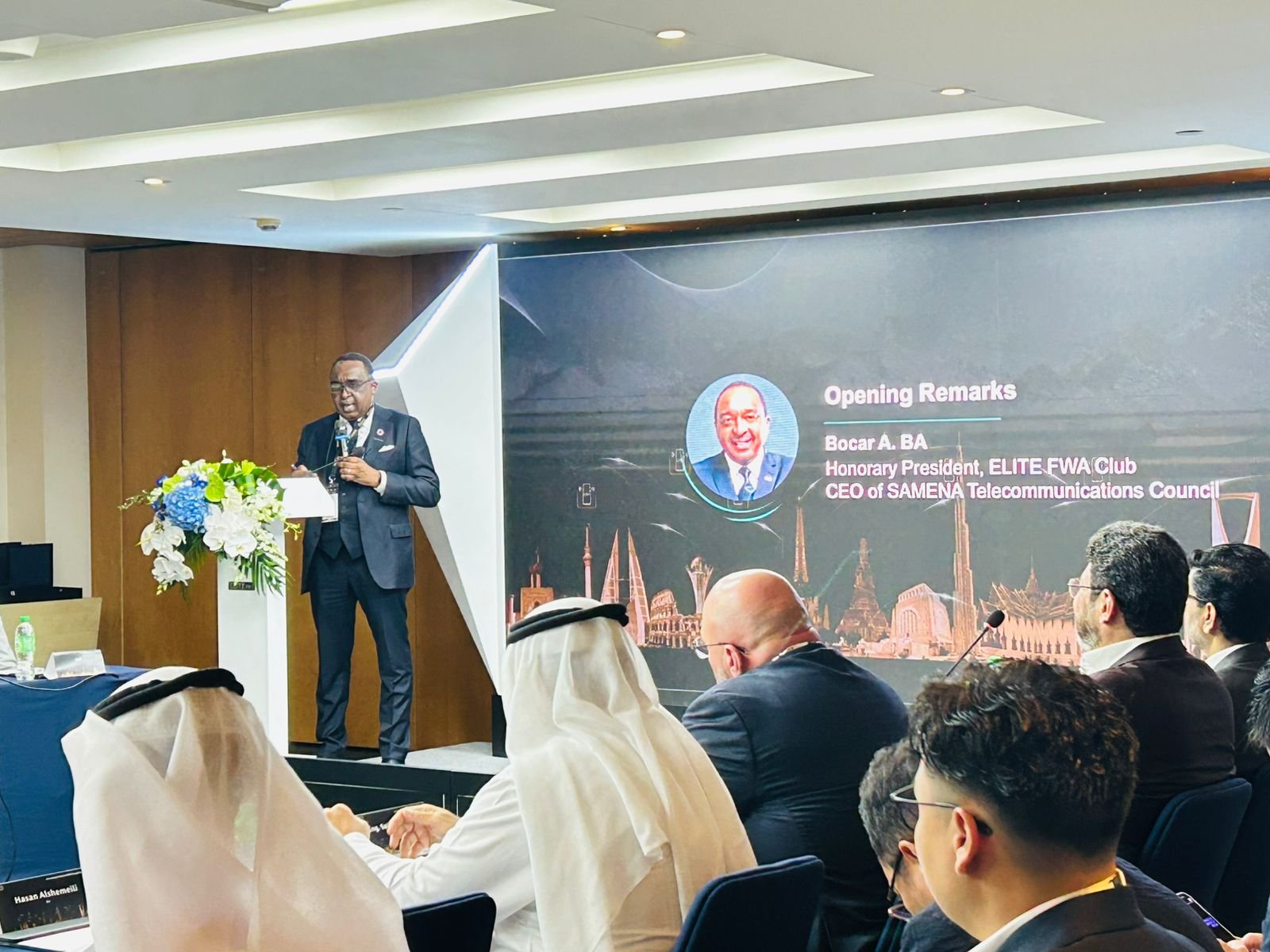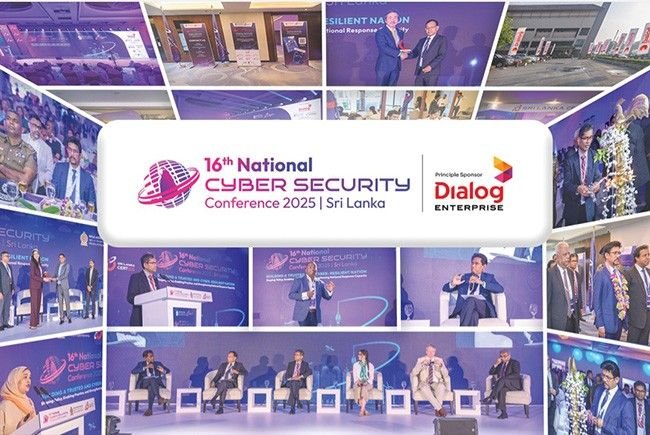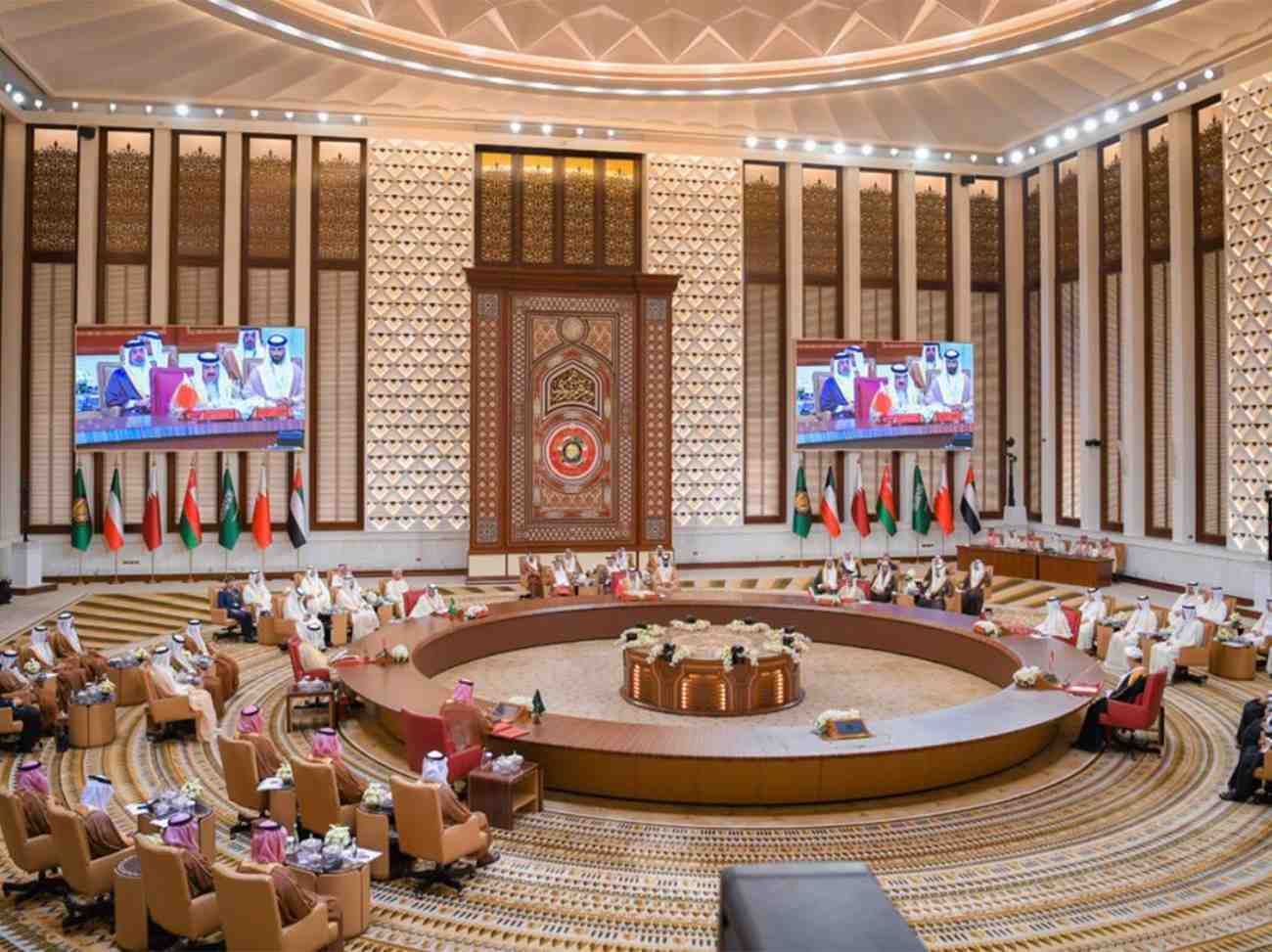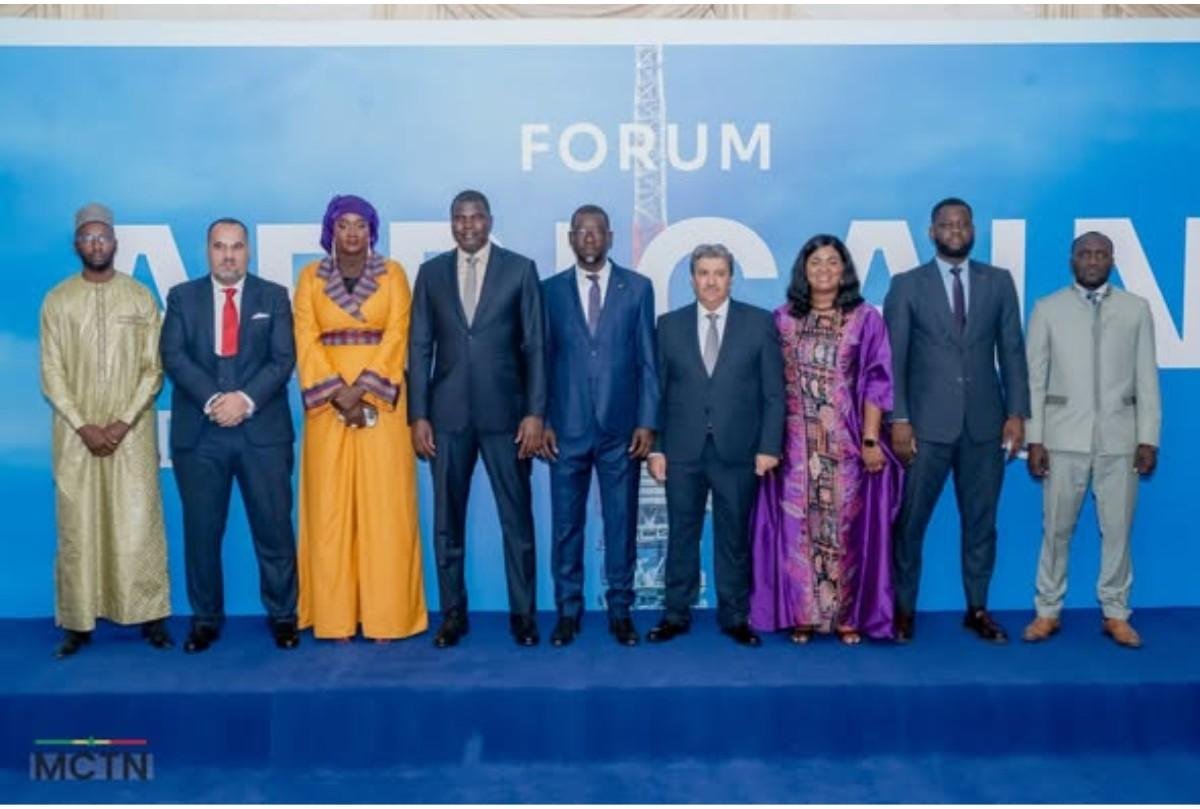DUBAI – At the 2025 Global FWA Evolution Roundtable, held during the GITEX Global exhibition, industry leaders gathered to chart the future of Fixed Wireless Access (FWA). The key message from the event was clear: FWA is no longer just a broadband solution but a foundational technology for building sustainable, intelligent digital economies.
Bocar A. Ba, CEO of the SAMENA Telecommunications Council, delivered a powerful keynote emphasizing that the future of connectivity is not about technology in isolation but about building robust industry ecosystems. He highlighted how the convergence of FWA, AI, and 5G-Advanced (5.5G) is creating new models for innovation, value creation, and digital progress across the Middle East and Central Asia.
Ba cited examples from the UAE and Kuwait, where telecom operators are using AI-powered FWA to deliver superior speeds and greater network flexibility. The discussion also focused on the transition to “non-pipe” infrastructure models, which encourage collaboration between operators and vendors to create more energy-efficient and scalable networks.
A key point of discussion was the challenge of extending connectivity to underserved areas. Ba stressed the importance of public-private partnerships and innovative funding mechanisms like Viability Gap Funding (VGF) to de-risk investments and make broadband deployment economically viable in rural and remote regions.
The roundtable featured a diverse group of stakeholders, including representatives from stc Kuwait, du UAE, and Huawei, who shared insights on FWA development strategies, service innovation, and the role of AI in network management. The event concluded with a recognition ceremony celebrating key contributions to FWA’s advancement in the region.
Editor’s Notes: The Strategic Evolution of FWA
The discourse at GITEX Global 2025 marks a pivotal shift in the telecommunications industry’s understanding of Fixed Wireless Access (FWA). It is no longer seen merely as an alternative to fiber, but as a strategic asset for national digital transformation. This is a crucial evolution that goes beyond technical specifications to address economic and social challenges.
1. From Pipe to Ecosystem The most important takeaway from this event is Bocar A. Ba’s emphasis on building an “ecosystem”. This moves the conversation past simply providing a “pipe” for data. The new FWA model, or FWA 2.0, is about creating a platform where different players—telecoms, technology vendors, and content providers—collaborate. By integrating AI and 5G-Advanced, FWA can become a smart, self-optimizing network that does not just deliver internet but also enables a new suite of services, like smart home solutions, remote health, and enhanced educational platforms. This shift is where the true value and monetization opportunities lie for operators, moving them from being commodity providers to integral partners in the digital economy.
2. The 5.5G Advantage The mention of 5G-Advanced (5.5G) is particularly significant. While 5G is a strong foundation for FWA, 5.5G takes it to the next level by offering faster speeds, lower latency, and greater capacity, all of which are essential for supporting data-intensive applications. By leveraging these advancements, as seen in the UAE and Kuwait, operators can significantly improve the user experience and justify a higher price point for their services. This is especially relevant in a region with a growing appetite for high-bandwidth activities like 4K streaming, cloud gaming, and augmented reality.
3. A Blueprint for Bridging the Digital Divide The discussion on Viability Gap Funding (VGF) is a pragmatic and actionable solution to a universal problem: how to connect areas where the business case for private investment is weak. FWA is inherently more cost-effective and faster to deploy than fiber, making it the perfect tool to bridge the digital divide. However, in regions with low population density, even FWA might not be profitable without some form of support. VGF, which uses government funds to cover the gap between project costs and expected returns, provides a smart mechanism to encourage private-sector participation in these vital projects. This demonstrates a mature understanding that achieving inclusive digital transformation requires innovative policy and financial models, not just technological prowess.
4. Collaboration is the New Currency The presence of executives from across the value chain (operators, vendors, and regulators) highlights the recognition that no single entity can build a future-proof digital infrastructure alone. The future of FWA, and by extension, the entire ICT sector, depends on a high degree of collaboration. The ELITE FWA Club and events like the one at GITEX Global are critical for fostering these partnerships, sharing best practices, and creating a unified strategy to push the industry forward.















